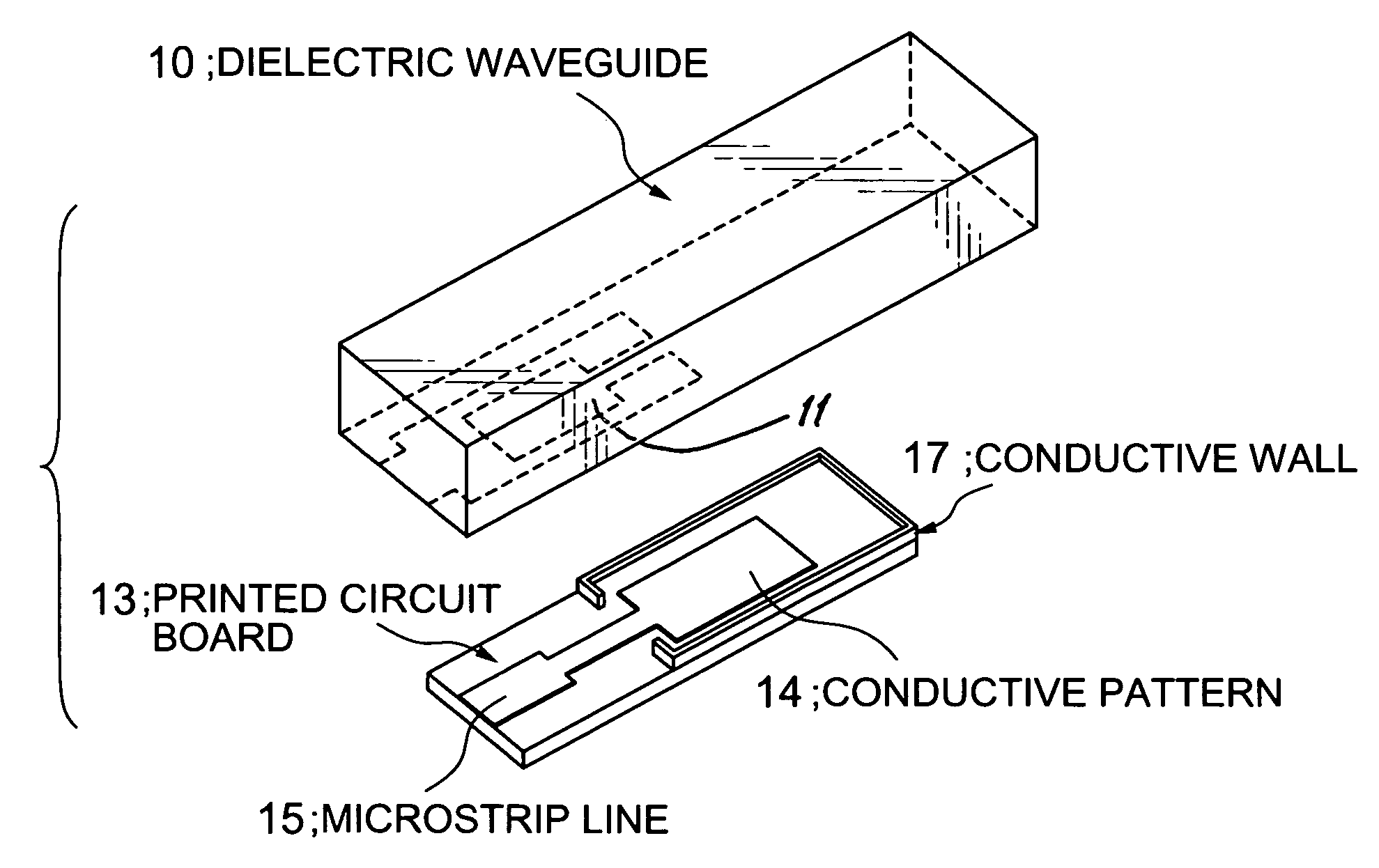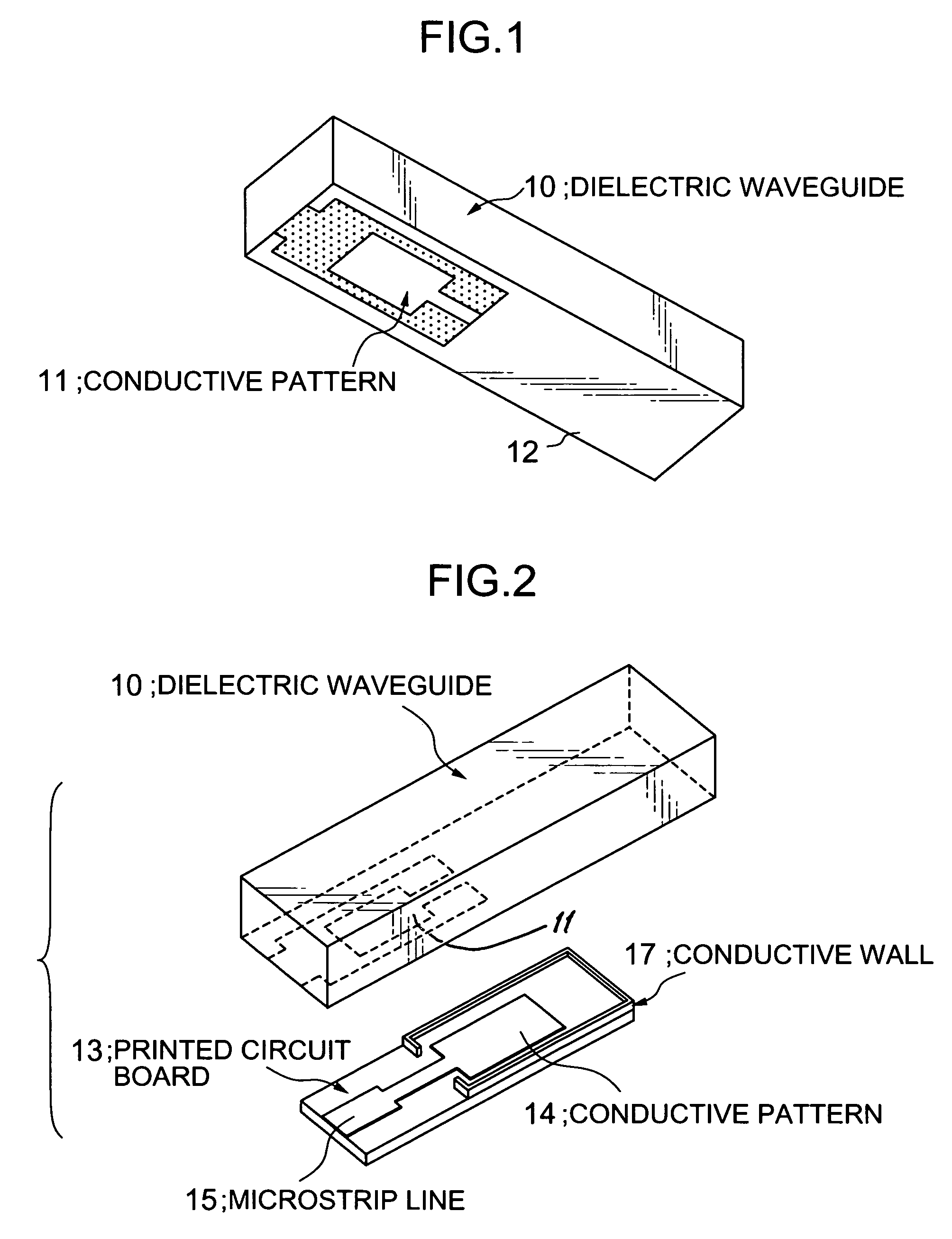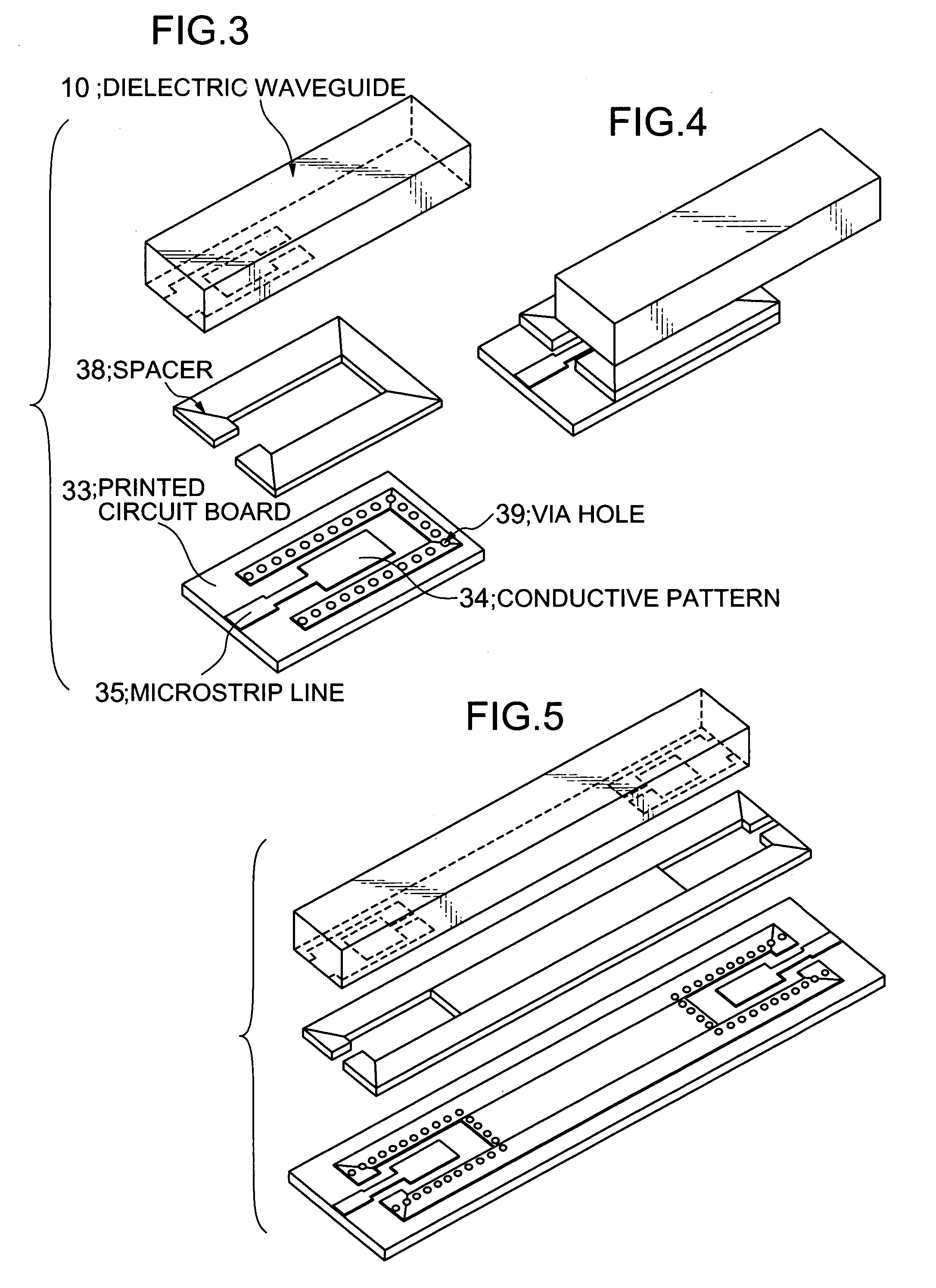Input/output coupling structure for dielectric waveguide having conductive coupling patterns separated by a spacer
a dielectric waveguide and coupling structure technology, applied in waveguides, resonators, electrical equipment, etc., can solve problems such as significant change in mode conversion characteristics, deterioration in practicality, and difficulty in application to small-size electronic devices, so as to reduce leakage or less of electromagnetic energy, prevent deterioration in transmission characteristics, and relax the restriction on positioning accuracy of the dielectric waveguide
- Summary
- Abstract
- Description
- Claims
- Application Information
AI Technical Summary
Benefits of technology
Problems solved by technology
Method used
Image
Examples
first embodiment
[0019]The microstrip line 15 and the dielectric waveguide 10 are electromagnetically coupled together by the opposed conductive patterns 11, 14 to allow electromagnetic waves to be transmitted therebetween. In a high-frequency range, a discontinuous portion in a junction between respective transmission lines is likely to cause a large radiation loss and significant deterioration in transmission characteristics. In the coupling structure the discontinuous portion is located inside the space or cavity defined by the conductive wall, and opposed.
[0020]FIG. 3 shows a practical input / output coupling structure according to a second embodiment of the present invention. In this embodiment, a microstrip line 35 includes a ground conductor formed on the bottom surface of a printed circuit board 33, and a strip conductor formed on the front surface of the printed circuit board 33. An array of via holes 39 are formed in the printed circuit board 33 to surround a coupling section (conductive pa...
second embodiment
[0021]FIG. 5 is an exploded perspective view of a sample prepared for measuring the characteristic of the input / output coupling structure according to the present invention. The sample is formed as a filter having input and output electrodes. A dielectric waveguide with a sectional size of 4 mm×2.5 mm was prepared using a dielectric material having a specific inductive capacity of 4.5. The dielectric waveguide was designed to have a length of 30 mm, and a pair of converters was formed, respectively, at the opposite ends of the dielectric waveguide to convert between the modes in the dielectric waveguide and the microstrip line. Then, transmission and reflection characteristics were measured during the conversion. The conversion section was designed to have a length of about 7 mm. The measurement result of the conversion characteristics is shown in FIG. 6. The filter had a reflection loss of 12 dB or more, and a transmission loss of 0.6 dB in the range of 25 GHz to 29 GHz. This verif...
PUM
 Login to View More
Login to View More Abstract
Description
Claims
Application Information
 Login to View More
Login to View More - R&D
- Intellectual Property
- Life Sciences
- Materials
- Tech Scout
- Unparalleled Data Quality
- Higher Quality Content
- 60% Fewer Hallucinations
Browse by: Latest US Patents, China's latest patents, Technical Efficacy Thesaurus, Application Domain, Technology Topic, Popular Technical Reports.
© 2025 PatSnap. All rights reserved.Legal|Privacy policy|Modern Slavery Act Transparency Statement|Sitemap|About US| Contact US: help@patsnap.com



